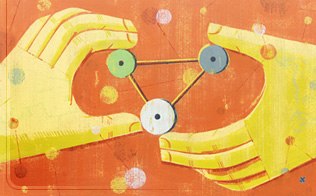Project news
November 18, 2013
First-Ever Survey of Do-It-Yourself Biology Community Challenges Myths
As the Do-It-Yourself Biology (DIYbio) community has grown, so have concerns among media and policymakers about these science enthusiasts' ability to wield DNA and manipulate life.
In 2009, for example, a Wall Street Journal headline summed up the popular misconception: “In Attics and Closets, ‘Biohackers’ Discover their Inner Frankenstein.”
But in a first-ever survey of DIYbio practitioners (DIYers), the Synthetic Biology Project at the Woodrow Wilson International Center for Scholars finds the community to be far different from these fearful and often sensationalist representations. A report released today, “Seven Myths and Realities about Do-It-Yourself Biology,” analyzes the survey results and challenges seven widely held beliefs about DIYbio practitioners, particularly about their labs, capabilities and goals.
“The data suggests that almost all of the well-known tropes about the dangers of DIYbio and citizen science are untrue,” says Daniel Grushkin, a co-author of the report and a fellow at the Wilson Center. “It’s time for policymakers to consider how grassroots science movements like DIYbio can serve the greater good by fostering entrepreneurship and excitement about science literacy.”
Among other conclusions, the survey finds that the number of DIYers has almost doubled in the last year and that the science they practice is far more benign than described in the popular press. The report suggests that the DIYbio community offers national education and entrepreneurship opportunities, rather than over-inflated risks.
And while it has largely been assumed that DIYers work anonymously and alone in basements and garages, the survey finds that 92 percent of DIYers work in group spaces. Of these, the majority work in community labs, which can provide biotechnology training and education for local neighborhoods.
The report concludes with six policy recommendations based on the survey results, including calls for government support for community labs, increased interaction between independent labs and federal agencies, and collaboration with educational institutions and corporations.
The full report can be downloaded here: http://www.scribd.com/doc/185148185/7-Myths-and-Realities-of-Do-It-Yourself-Biology
